By Rick VanSickle
Looking back on this Ontario vintage chart, there are several standout years that were all, in one way or another, lauded as being the “best ever” until it was eclipsed by the next “best ever.”
So, I am going to tread very carefully here. I’ve already been firmly warned on Twitter by the Grande Dame (and I mean that in the most respectful way) of B.C. wine, Sandra Oldfield, that calling any vintage the “best of the decade” or “best of the century” or “best ever” puts past and future great vintages in a tricky spot. “They can’t ALL be the best,” Oldfield tweeted after reading a post on this website about the well-lauded 2020 wine vintage in Niagara that more than a few winemakers commented has the potential to be the best of the century and beyond. And she’s right for calling it out. Once you say best of the century, millennium, decade or ever, you run out of wiggle room and the term just loses its meaning.
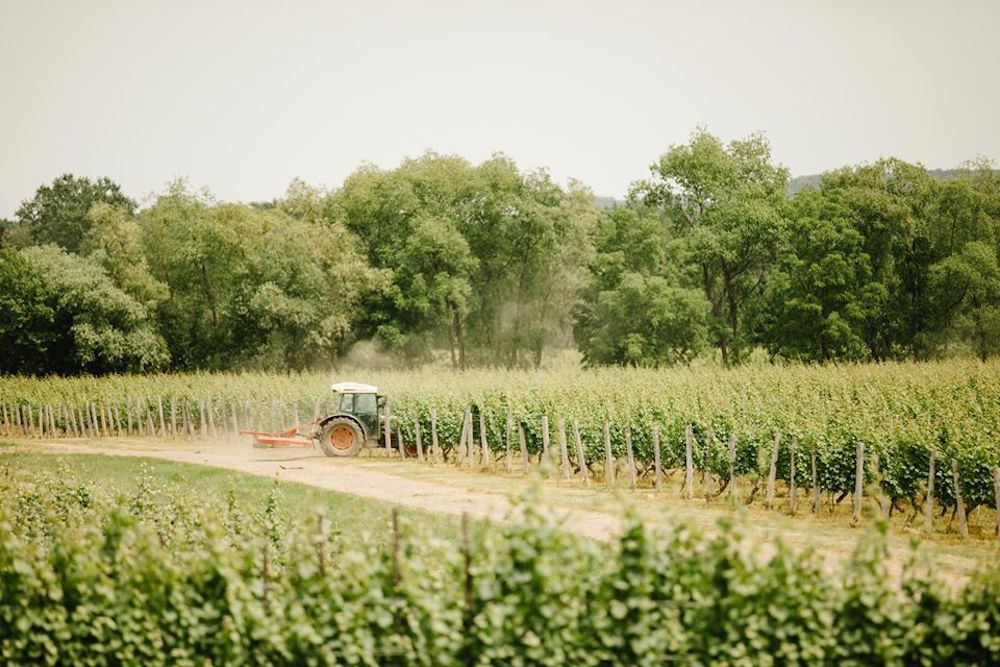
But one thing I am reminded of, in terms of wine and growing grapes in relatively young regions such as Ontario, B.C. and anywhere in Canada, the quality can only improve as the vines get older, vintners understand what grows best where and winemakers get better and better at their craft through farming and technology. It’s an evolution, a transformation, that really only has upside as long as we can still grow grapes in the current climate going forward (and if we don’t wake the f*** up about our climate, that’s a very real concern!). There will always be another vintage that comes along to knock the greatest vintage off its lofty perch and into the dusty old cellars of time. It’s the nature of the beast.
All that being said, the 2020 vintage in Ontario is quite likely the G.O.A.T. We’ve barely seen any of the wines yet and only have the harvest season and opinions of those who grow the grapes and those who are making the wines to go on, but unless something very weird happens in the cellars of all the wineries in Ontario, we are definitely going to see some of this province’s most impressive wines — across the board — to date. Ever. Up to this point in time.
The other “greatest” vintages ever — 2016, 2012, 2010, 2007, 2002 and 1998 — were once the G.O.A.T., but they no longer are entitled to that claim because a year like 2020 came along and delivered spectacular, near perfect weather for grape growing and gave winemakers the raw ingredients to make stunning wines.
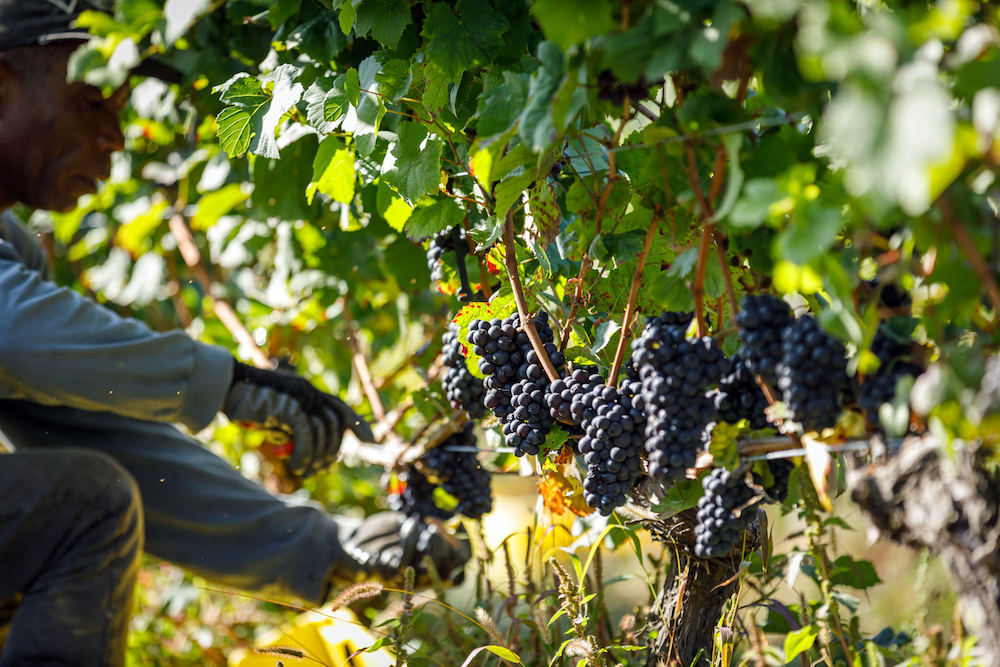
There’s a lot to take in here. The vintages mentioned above as being great would get push back from a large faction of winemakers in Ontario. All of those vintages have one constant thing in common — heat. They were hot vintages, most with little rain, and produced ideal conditions for the Bordeaux varieties. Ask a Pinot Noir-centric, Riesling or Chardonnay winemaker/grower what were the greatest vintages in Niagara were to this point, and it likely won’t include any of those vintages. They would point to the cooler years, or at least more moderate, as ideal for early ripening varieties.
What’s different about 2020 is something that rarely happens in Ontario — the warm, dry season had just enough cooling and rain at the right time to provide perfect conditions across all the main varieties grown in the province. Pinot winemakers were air high-fiving with Cabernet Sauvignon winemakers. Now, that’s a first! Chardonnay growers were doing fist pumps with Syrah and Sauvignon Blanc growers. Not kidding here. Riesling and Merlot growers were sharing beers (socially distanced, of course) at Bench Brewing. It was strange days at the end of harvest. Everyone was happy.
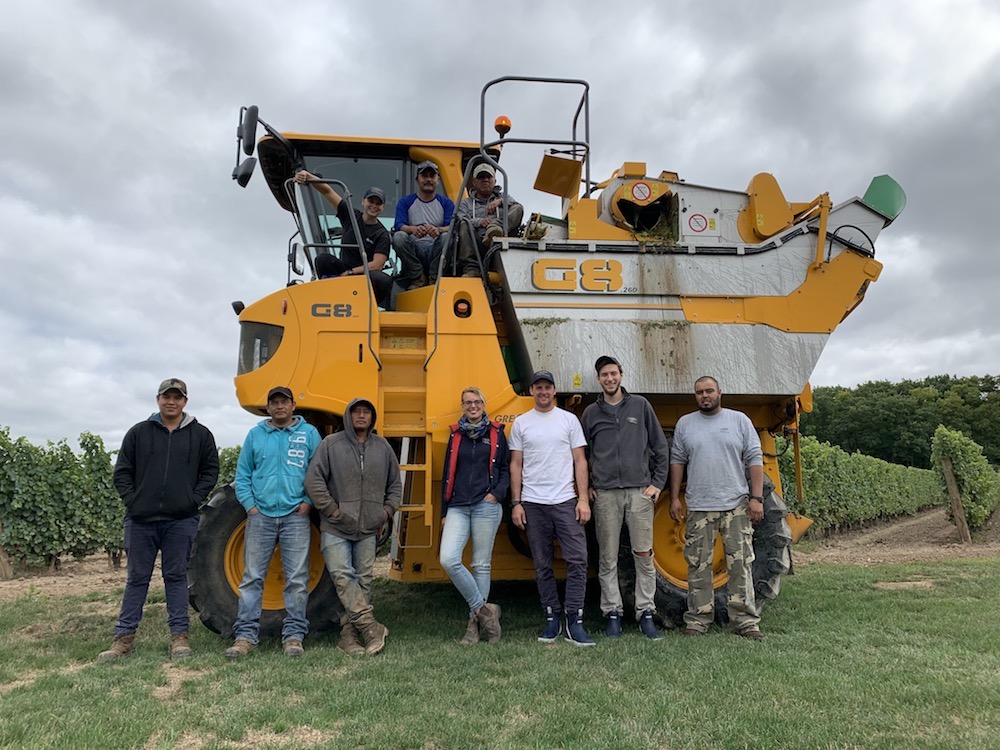
We have been publishing this Ontario vintage chart for the past 12 years here on Wines In Niagara. We have attempted to keep it current and relevant. And, in light of what was just discussed above, tweaking of descriptions and even ratings, have occurred over time.
New to the chart is a “tentative” rating for 2020, a more informed rating for the 2019 vintage and updates on all the other vintages (mainly in the drinking window) back to 1998.
As with any rating system, the score is less important than the description of the vintage. That is especially true when discussing a region such as Ontario where so many varieties of grapes are grown. What’s good for the Bordeaux varieties isn’t necessarily good for aromatic whites and early-ripening red grapes in any given vintage. It is rare that, in terms of wine quality, a year is a total failure or a total success in Ontario, unlike vintages in say, Burgundy or Bordeaux. Please keep that in mind when reading our assessments.
With that being said, the 2020 vintage is the exception to the above statement. For various reasons, touched on above, below and detailed in our extensive report of the vintage in this post here, the 2020 growing season provided ripeness for the Bordeaux red varieties, elegance and finesses for white wines and complexity and ripe tannins for varieties such as Pinot Noir.
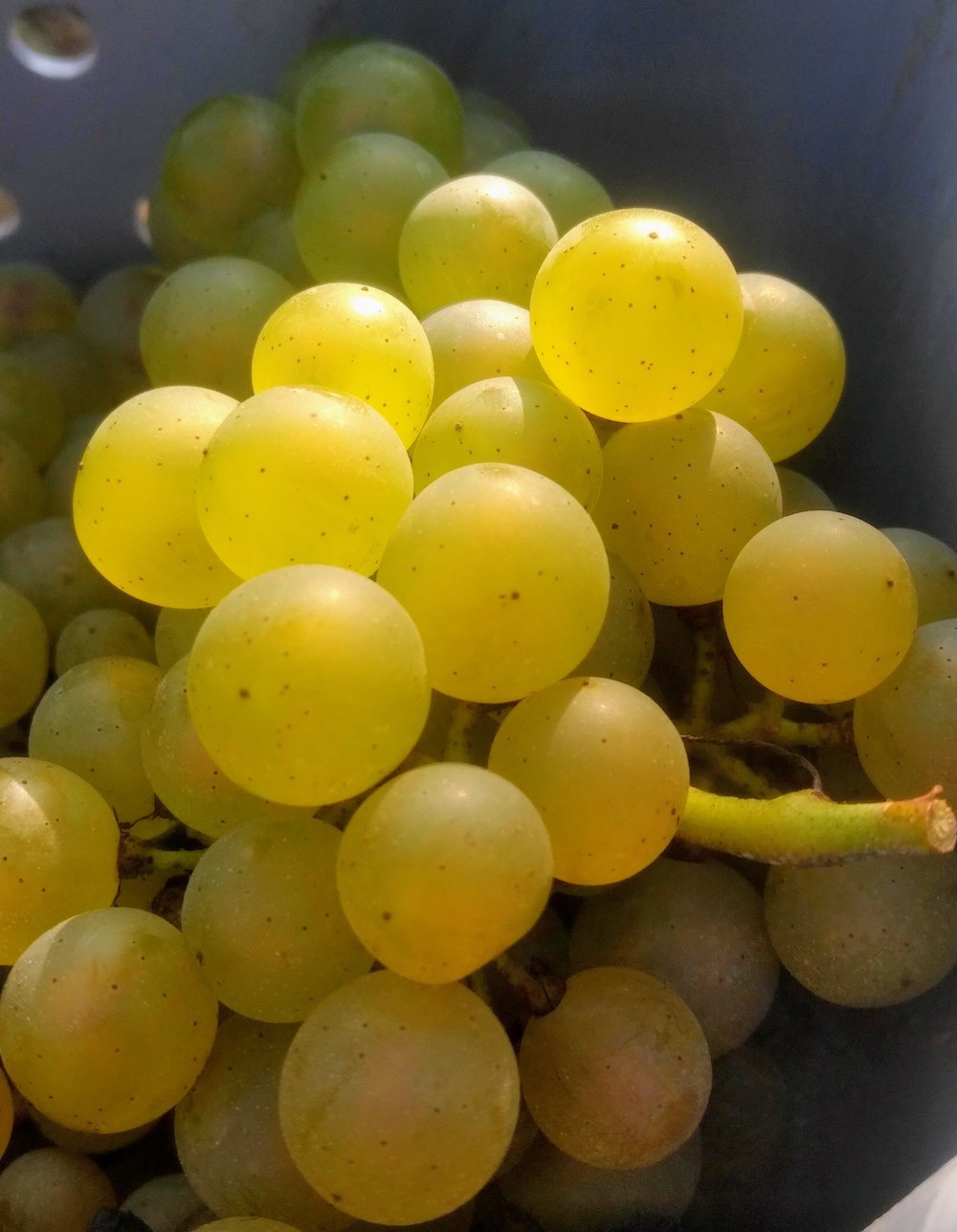
Ontario Wine Vintage charts
going back to 1998
2020 ★★★★★★★★★★ (10 out of 10, tentative)
Yes, you read that correctly. Our tentative rating for 2020 is a perfect 10. How could it not be? Almost 30 winemakers are confident that 2020 is the best they have seen in their winemaking careers in Ontario. There are few comparables. Yes, it was hot like 1998, 2002, 2007, 2010, 2012 and 2016, but 2020 was different; it was more favourable to all varieties across the board. It is the rarest of vintages when all grapes in Ontario (if picked at the right time) reach phenolic ripeness and maintain the acidity needed for balance, but, by all accounts, 2020, has both of those key ingredients as well as ripe tannins that will provide the structure and longevity in the red wines and offer complexity, elegance, body and freshness in the white wines across the board. While there were minor issues with early frost outside of Niagara and a crop 20% below normal levels across the board, by harvest the grapes benefited from ideal hang time, phenolic ripeness and each varietal was picked in optimum succession from beginning to end. It was a stress-free harvest and the one bright spot in an otherwise horrid year of COVID. Every winery we talked to is planning on bottling their top reserve reds, single-vineyard Pinot Noirs and Chardonnays. This is a vintage to buy and cellar once they start arriving on shelves. As for icewine, because the harvest was smaller and sales of Canada’s signature wine have plummeted due to COVID, very little was made in 2020, but what is being made should be sensational. Will prices rise on the top bottlings? I suspect they will due to shortage of grapes and the quality. But, as Rosehall Run winemaker Dan Sullivan said: “When the 2020 Ontario wines start being released run, don’t walk, to your nearest tasting room or online winery store and buy as much as your wallet can handle. Good fortune awaits the astute.” Sage advice, to be sure.
Whites: We are just starting to see early rosés and other unoaked whites hitting the shelves. These are meant to be enjoyed young. We anticipate Rieslings, Chardonnays, Sauvignon Blancs etc. will be more concentrated and complex than previous vintages and will be cellar worthy.
Reds: We won’t see the Bordeaux varietals and Pinots for a year or two, but we anticipate long-lasting, cellarable examples that will rival those from 1998, some of which are still going strong today. You will want to buy and hold the top examples.
2019 ★★★★★★★ (7 out of 10)
You hear it a lot in Ontario — that was the wildest harvest ever! Well, in 2019, it truly was the craziest growing season in a very long time. A wet, cool spring put everything behind by about two weeks. Summer brought typical weather with normal temperatures across Ontario and the growing season got under way. Flowering occurred quickly as the grapevines accelerated their growing, but struggled to make up for the late start. July was warm and sunny, punctuated by intense heat waves and high humidity. August was warm and intermittently stormy, leading into a comparatively quiet September, cool with some rain – but bringing decent conditions to finish off the summer and begin the harvest season. Early-ripening grape varieties escaped the wild weather of late fall and especially an unusually early cold snap in mid-November. Yield reductions were common for many of the red varieties to ensure optimal ripeness, particularly for later maturing varieties. Harvest extended into early December, sometimes taking place in the snow. The first icewine grapes were picked on Nov. 12, well before a lot of the red Bordeaux varieties. White wines are the superstars of the vintage with crispness, ripe fruit and finesse. Early-ripening reds such as Pinot Noir are proving to be beautiful, built in the vein of the 2009s. The fuller-bodied reds will depend on the winery, winemaker and picking decisions (and, perhaps, technology). The verdict is still out, as not many of the finest examples have been released. One thing is certain, there will be no lack of freshness in Ontario wines from 2019.
Whites: Drink or hold aromatic whites (can hold Rieslings 3+ years), drink or hold Chardonnay
Reds: Drink Gamays (or hold a year or two), hold Pinots, too early to tell on the Bordeaux varietals.
2018 ★★★★★★★★ (8 out of 10)
Having now tasted many of the 2018 reds and whites, I have upgraded the overall score on the vintage to 8 out 10 stars. These are wines with freshness, depth and complexity, generally speaking. It was an ideal summer; hot, dry and long, sunny days. Everything was ahead on the ripening front and it appeared to be another 2016 or 2012. But heavy rain and thundershowers mid-harvest turned the vintage on its ear and left many growers and winemakers with tough decisions to make in the vineyard (not to mention dog tired). In some cases it was a choice between saving one variety over another. The quality of the wines entirely depends on what decisions were made — not only in the vineyard but also in the winery. Most wines made with grapes harvested before the rains began are exceptional. Those wines made with grapes harvested after the rains began have to viewed through a different lens and assessed on a wine by wine basis. Winemakers feel the wines they have are of good quality. The wines are tasting better than I anticipated, though there are low yields in many varieties.
Whites: Drink or hold aromatic whites (can hold Rieslings 3+ years), drink or hold Chardonnay
Reds: Drink Gamays, hold Pinots, Bordeaux varietals.
2017 ★★★★★★★½ (7½ out of 10)
All summer long it looked grim for the 2017 grape harvest in Ontario with cool, wet weather and the odd hailstorm thrown in very good measure. Then Sept. 1 rolled around, bringing extended heat and sunshine for one of the nicest falls on record and one of the latest harvests on record. The extra hang time for the grapes provided some needed ripening (in some cases right into December) and turned a potentially disastrous vintage into a fairly good one. It was also a record harvest in terms of tonnes of grapes harvested. It resulted in excellent quality for aromatic white wines and good to excellent results for Pinot Noir, Gamay and Cabernet Franc. A few wineries declassified their top Bordeaux-varietal-based red grapes (so watch for the lower tiered reds to benefit from those grapes). As the whites and some reds have been released, I have been impressed with the quality. It would appear Ontario fully recovered from the back-to-back winter-kill years of 2014-2015.
Whites: Drink aromatic whites (can hold Rieslings 3+ years), drink or hold Chardonnay
Reds: Drink Gamays, hold or drink Pinots (5+ years, hold Bordeaux varietals.
2016 ★★★★★★★★★½ (9½/10)
Winter in 2016 was mild and drama-free for grape growers in Ontario. By mid-May, the vintage settled into a sustained pattern of much drier and slightly warmer than normal. Drought in some areas was a concern in some parts of Ontario. The hot, dry conditions prevailed throughout August, with lots of sunshine and just enough rain to keep drought conditions from becoming too severe. Targeted irrigation was required to sustain the young vines planted to fill in sporadic damage from the cold 2014 and 2015 winters. Weather conditions were very similar in all appellations with the exception of a short but major rain event in Lake Erie North Shore in September. In all, the growing season presented outstanding opportunities for grape quality across Ontario. Harvest was early in all regions for all varietals and was stress-free with dry conditions and limited disease pressures. It was the perfect recipe to provide an excellent vintage. Virtually all grape varieties performed well in 2016 and were picked in pristine condition. This is a year to buy and hold those bigger red wines (Bordeaux varietals, Syrah, etc.) that will age gracefully for 10 years or more. The Chardonnays are generally more robust than in cooler years and Pinot Noirs more complex. Rieslings will be riper and have immediate appeal. Across the board, this is a great vintage along the lines of 2012, 2010 and 2007 and a good bounce back from 2014-2015, even if the tonnage was not quite back to normal. You can buy most varietals and blends with confidence.
Whites: Drink/hold Rieslings, drink Pinot Gris, Sauvignon Blancs; start drinking Chardonnays but some can hold a bit.
Reds: Drink Gamays, hold Pinots 1-2 years, hold on to bigger reds (save some for extended cellaring). This is be a breakout year for appassimento-style reds, hold for a little longer.
2015 ★★★★★★★ (7/10)
This was the second-half of two brutal winters that caused a great deal of hardship and soul searching for winemakers and grapes growers in Ontario. Record-breaking cold in the winter of 2015 was not what was needed after the horrible conditions of 2014. Many acres of grapes needed to be replanted and wineries had to make tough decisions of what not to plant in their terroir. The summer growing season brought good conditions with few major storms and sunny warm weather in all appellations. Niagara was slightly drier than Prince Edward County and Lake Erie North Shore. September weather settled nicely into warm beautiful conditions for the start of harvest and, except for some rainy periods in October, fall weather was favourable. Harvest conditions were excellent and good weather prevailed for much of the harvest period. Overall, grape production across the province was moderately less than normal but slightly more than 2014 when tonnes harvested was substantially less than previous years. Cold temperatures in January and February resulted in markedly reduced crop yields in Lake Erie North Shore, and less than full production in Niagara Peninsula and Prince Edward County. Tender grape varieties in particular were in short supply. The irony of the vintage, devastating winter kill aside, is that it all averaged out by harvest and created conditions that allowed Ontario’s classic varieties — Riesling, Cabernet Franc, Pinot Noir and Chardonnay — to show well. Look for good concentration of flavours for the later ripening varieties that profited from the warm, dry summer and fall. In all, 2015 wines fared much better than 2014 wines, despite both vintages suffering through some of the most severe winter conditions seen in Ontario.
Whites: Time to start drinking Rieslings and Chardonnays (maybe hold a few of the top examples), drink the rest
Reds: Drink Pinot Noirs and Cabernet Francs, start drinking red blends and finish the Gamays. Syrah can be held for a year or consumed now.
2014 ★★★★★★ (6/10)
The year was highlighted by a brutal winter that ultimately caused wide-spread bud damage leading to vine death in several varieties including (but not limited to) Syrah, Merlot, Semillon and Sauvignon Blanc. Couple that with a cooler year that always seemed a couple of weeks behind, varieties such as Cabernet Sauvignon and Cabernet Franc were tested. It is not a year for big red blends, but, on the bright side, the early-ripening Riesling, Chardonnay, Pinot Noir and Gamay enjoyed a very nice harvest and should provide some decent wines from the vintage. Look for de-classified reds from wineries with a trickle-down portfolio, good to excellent Riesling, Pinots, Chards and Gamays. I have spoken to many winemakers who did not make their top red blends in 2014 and many others who replanted their damaged and dead vines with varietals more suited to all weather conditions in Ontario. Wines from Prince Edward County weren’t hit as bad as Niagara and Lake Erie North Shore for two reasons: They bury their vines and they don’t grow that many varietals outside of Chardonnay and Pinot Noir.
Whites: Drink soon, hold only top Rieslings and maybe some top Chardonnays.
Reds: Early drinking reds, for the most part, drink up. Check on bigger reds, but not built for the long haul.
2013 ★★★★★★★½ (7.5/10)
It was a late start to the season with every kind of weather imaginable tossed into the equation. Hot, cold, wet, dry … it was a rollercoaster ride, especially in Niagara. When it was all said and done, the season played to each region’s strengths — Chardonnay, Pinot Noir, Riesling and Cabernet Franc in Niagara, Pinot and Chard in Prince Edward County and early ripening varieties in Lake Erie North Shore. Most aromatic whites across the board have shown promise in 2013. Quality is spotty for the other Bordeaux varieties, Cabernet Sauvignon and Merlot, and anything that was left out on the vine to ripen late. I would call it a typical vintage for Niagara that plays to the strengths of what the region does best but some of the top bottlings, especially in big reds, have been de-classified. It was a record crop both for table wines and icewine grapes, which could come in handy for 2014 after a severe January cold snap caused wide-spread damage to vines, mostly in Niagara and Lake Erie North Shore.
Whites: Drink now, Rieslings 2+ years
Reds: For near-term drinking, for the most part.
2012 ★★★★★★★★★½ (9½/10)
The mood in Niagara during the early harvest of 2012 was one of pure joy. Ripe fruit in pristine condition after a long, hot summer and early fall sent grape pickers into the vineyards in mid-August to harvest early-ripening varieties. It was one of the earliest harvests on record for all varieties with only a slight hiccup during a brief rainy period in September. Reports from all regions in Ontario indicated a near-perfect season with the Bordeaux-style red grapes leading the way. Winemakers were also excited by the white grapes, especially Chardonnay, Riesling and Sauvignon Blanc, that all showed both juicy ripeness and natural acidity. The largest icewine crop was netted since 2007, an indication that Canada’s most famous export was set for a rebound in 2012. Since first writing this report I have now tasted most of the key 2012 reds from this vintage and have re-evaluated many of the whites. I have upgraded the rating from 9 stars to 9½ because I feel strongly that 2012 will prove to be the best vintage Ontario has ever encountered to date (that is, until 2020 came along). It’s not just the big red wines that are showing such promise, but all varieties across the board. Sort of unheard of until now. My suggestion, buy what you can from 2012 and cellar what you can, it’s as good as it gets in Ontario. Drink 2013s and 2014s while you wait.
Whites: Drink now, or cellar 1-3 years especially Riesling. Time to dig into those ripe Chardonnays.
Reds: Cellar 3 years or more, Bordeaux blends 3-10 years
2011 ★★★★★★½ (6.5/10)
The extremely wet fall, during the peak of harvest for most varieties, meant careful buying strategies. Quality varied from winery to winery, and it depended a lot on picking decisions that were made. Pinot Noir, Gewürztraminer, Baco Noir and Cabernet Franc escaped the worst of the wet harvest, while Chardonnay was hardest hit. Late-harvest and icewine Rieslings were also affected by late-season rain. That being said, there are some very nice wines from 2011. Shop carefully. I have tried a few 2011s recently and down-graded my original rating by a half-point.
Whites: Drink now
Reds: Start drinking them up
2010 ★★★★★★★★★ (9/10)
Winemakers across Ontario have never been happier with a vintage. The harvest started in the extreme heat of August and continued without concern through October. The red varieties, especially Cabernet Franc, Cabernet Sauvignon and Merlot, are some of the best grapes grown in Ontario and should age gracefully. Even some of the whites show wonderful complexity, without being too flabby and soft. You can consume most Ontario wines from 2010 with confidence.
Whites: Drink now
Reds: Cellar up to 2 more years for Bordeaux varietal blends, or drink now
2009 ★★★★★★★ (7/10)
In many ways, 2009 was similar to 2008. A cool, wet summer put the harvest up to 14 days behind for most red varieties, but a long, warm fall saved the vintage. Aromatic whites, particularly many exceptional Rieslings, are the stars of the vintage, along with the fabulous pinot noirs that are proving to be the best in recent memory. Bordeaux varieties had trouble ripening, especially Cabernet Sauvignon. Many wineries didn’t make their top red wines.
Whites: Drink now, Rieslings can cellar for a couple more years or drink now
Reds: Drink now or cellar another year (especially Pinot Noirs)
2008 ★★★★★★★½ (7.5/10)
It was a wet growing season in Ontario, especially in Niagara and Prince Edward County, and grape ripening in all appellations was a challenge. The quality of this vintage depended entirely on vineyard management. Whites and cool-climate reds (Pinot Noir and Gamay) fared better than other varieties. The ’08 Rieslings and other white varieties are superb, but consumers should be selective with the reds. Complex Chardonnays are the stars of the vintage.
Whites: Drink now (or more if you like that nice vein of petrol in your Rieslings)
Reds: Drink now
2007 ★★★★★★★★★½ (9.5/10)
The growing season across Ontario was just about perfect. The 2007 vintage was the best in Ontario’s history, up to this point. It was warm, dry and ideal for extended hang time on the vines. The 2007 whites showed beautiful concentration of flavour, but lacked acidity and fell apart quickly. The red wines are proving extraordinary, especially with some age on them, from variety to variety. Look for rich, ripe, concentrated Bordeaux-style reds built to last. I tasted a Henry of Pelham Reserve Cabernet/Merlot 2007 in February, 2021, and it blew me away. It still has the stuffing to another 5+ years.
Whites: Drink now, fading fast and drying out
Reds: Drink now (but some examples are still evolving nicely).
2006 ★★★★★★★ (7.5/10)
Not as wet as 2008, but still humid and slightly cooler than normal. The mood was upbeat in Ontario as vines recovered from the terrible winterkill of 2005. There was plenty of sunshine in August, but a wet September meant wineries had to employ good vineyard selection. It was a decent year for Chardonnay, Riesling, Merlot, Gamay, Cabernet Franc and Pinot Noir, and a great year for icewines.
Whites: Drink now
Reds: Drink now
2005 ★★★★★★★ (7/10)
This was a disastrous year. An extremely cold winter killed any hope for a healthy vintage, with more than half of the vintage wiped out. Many producers didn’t have enough wine to sell and suffered hefty financial losses. Both Lake Erie North Shore and Pelee Island fared better than Niagara. The irony of the vintage was that, even with a tiny crop, what was grown ended up being pretty good.
Whites: Drink now
Reds: Drink now
2004 ★★★★★★★ (7/10)
The 2004 vintage was a major relief for producers following the bad winter of 2003. Conditions improved immensely, and vines recovered from the previous winterkill. Some of the stars of the vintage include Riesling, Chardonnay, Pinot Noir, Cabernet Franc and Gamay. Tender varietals didn’t fare nearly as well.
Whites: Drink now
Reds: Drink now
2003 ★★★★★★★½ (7.5/10)
This vintage had it all: a horrible winter resulting in another short crop (a reduction of 45 per cent of all vinifera vines), the reappearance of the Asian lady beetle (which causes a nasty taint in wines) and, despite all of that, the emergence of some mighty fine whites. The rating for this vintage is really split between red and white wines: a 6.5 for red wines and an 8.5 for whites.
Whites: Drink now
Reds: Drink now
2002 ★★★★★★★★★ (9/10)
A lot of winemakers rank this vintage up there with 2007 and 1998. This vintage was highlighted by severe drought conditions in all Ontario appellations for most of the summer. The resulting grapes ripened beautifully, with small, concentrated grapes, high sugar levels and tannins. A tasting of top 2002 cab-merlots in 2010 showed just how wonderful most of these reds have come along. Most are just now coming into balance and show wonderful fruit, spice and tannins.
Whites: Drink up
Reds: Drink up, but some Bordeaux blends still holding on nicely, if you like mature wines
1998 ★★★★★★★★★ (9/10)
The best examples from this benchmark vintage are still showing beautifully. The whites are fading and most have faded, but only just recently. This is considered by many to be the vintage of the last century and the most significant vintage in Ontario’s history. Recently opened bottles from this vintage are superb. The top Bordeaux-style reds continue to impress but all should be consumed now.
Whites: Drink now
Reds: Drink now, but if you have any Bordeaux blends in your cellar, some are holding on nicely.


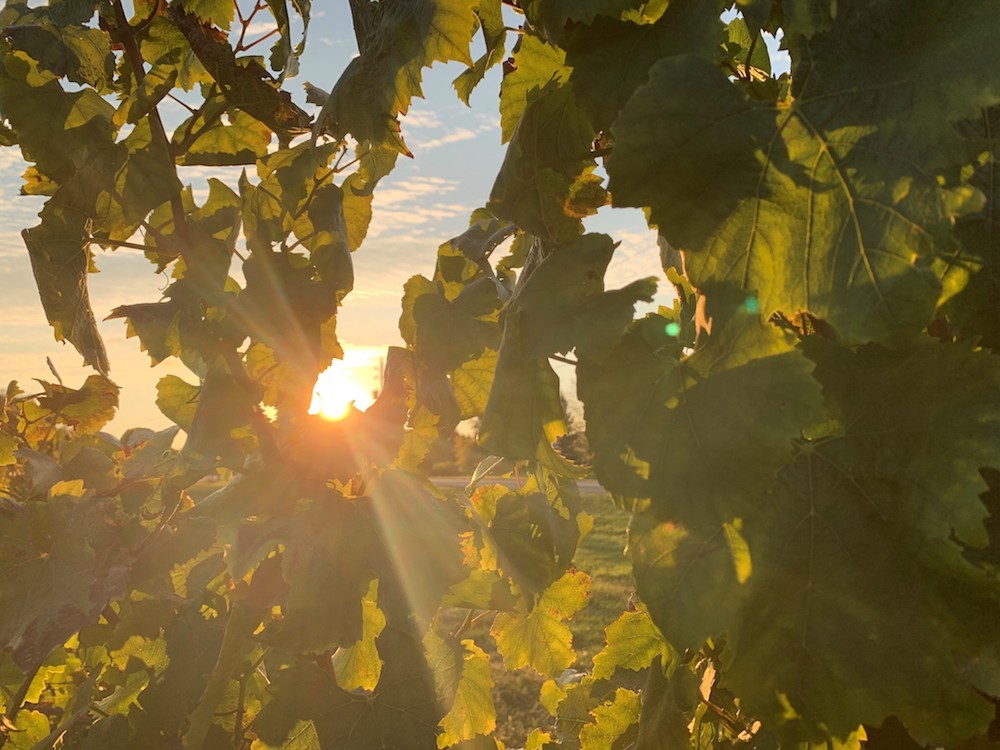



I would love to see something like this for BC!
I honestly don’t know why someone isn’t going a vintage chart in B.C. Many years ago, vintages charts for all regions were published once a year in Wine Access Magazine. I wrote the Ontario chart and when the publication folded, I kept it up on this website. — Rick VanSickle
Great article!
Thanks a lot, Fred, that means a lot coming from you. Cheers!
why is Canada not included in the Wine Enthusiast vintage chart. We have great wines here!
It’s a good question, and I don’t know the answer. I’m not even sure if a writer in B.C. or anyone does a similar vintage chart to the one here that we do for Ontario,